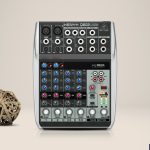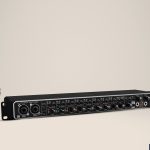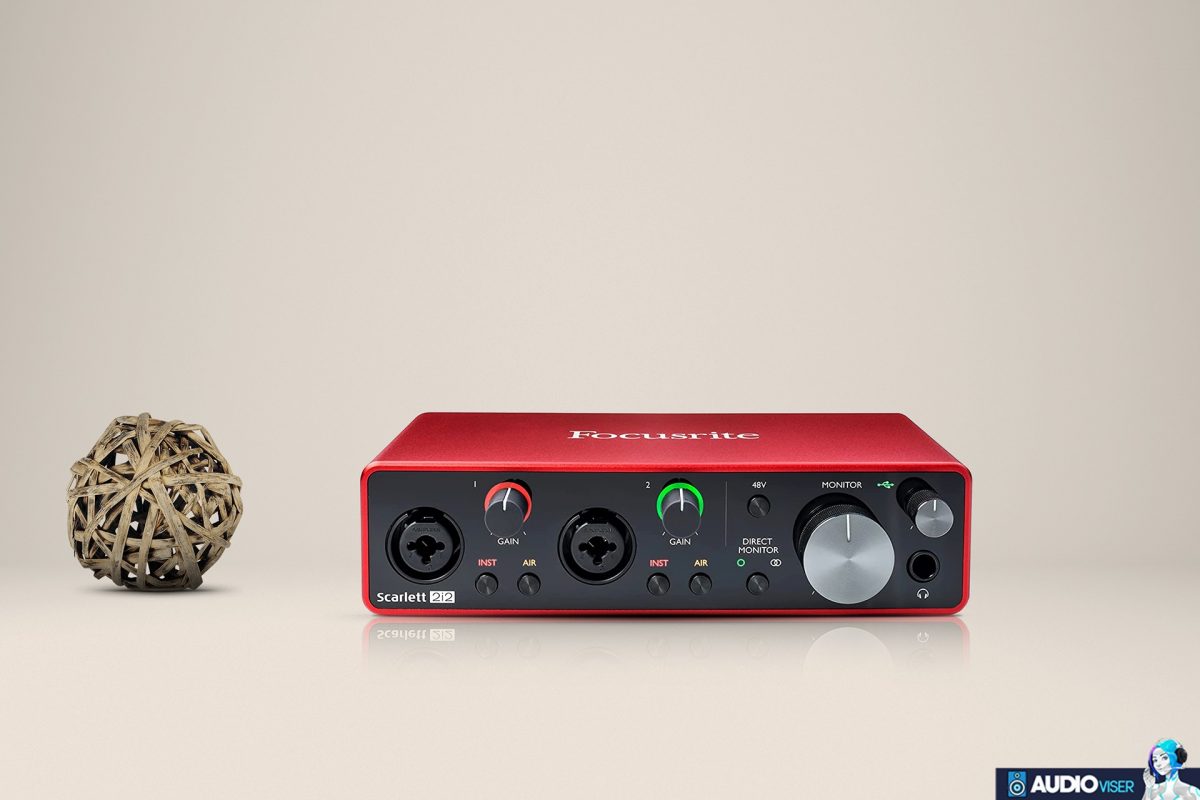
Every time I am about to begin an article, I get so thrilled. Guys, nothing has changed; the situation remains the same. If you’ve read any of my posts, you may have noticed that I occasionally talk more than is necessary. This is simply because I want to explain everything to you in great depth, but just in case, I’ll try to keep this article a little shorter this time so you don’t waste too much time reading it.
This time, I’m writing about audio interfaces that work well with the incredibly well-known Shure SM7B microphone. Before beginning to expose you to the best interfaces, I want to first give you some background information on audio interfaces, including what they are and the purposes for which we use them.
To make sense to our computer, an audio interface transforms the analog electrical waves that a microphone generates into a stream of discrete electrical voltages that correspond to 1s and 0s. These audio interfaces are required for common microphones that generate analog electrical signals using balanced XLR connectors.
I made an effort to describe an audio interface to you briefly, but I’ll get to the meat of my paper right away. I’m hoping you’ll like it.
| Image | Product | Features | Price |
|---|---|---|---|
Best Mid-Range  | 10 | Check Latest Price | |
Best Budget  | 9 | Check Latest Price | |
Best Runner Up  | 8.5 | Check Latest Price | |
Best Overall  | 8.8 | Check Latest Price |
The Top 5 Best Audio Interfaces For Shure SM7B
5. MOTU M2 – Best Mid-Range
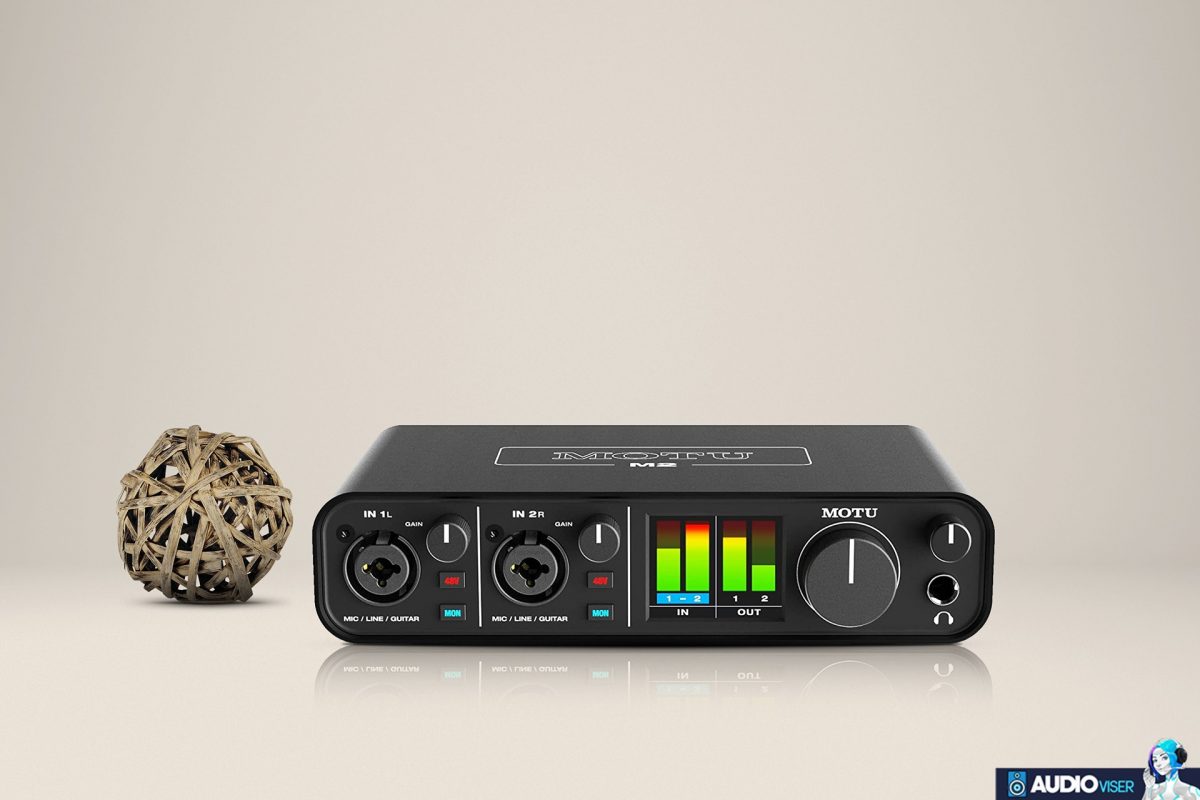
We may anticipate a lot of advantages and good audio quality from this audio interface. If you wish to pursue a career in voice acting professionally, you need to use this enhanced version of the audio interfaces. Therefore, if you simply purchase this interface, the only thing that might happen to you is all the advantages you will receive. So let me explain what this audio interface allows for.
I’d like to start by introducing this interface’s appearance and its front and back-end features. Two XLR inputs, a headphone jack, and an input and output monitor are located on the front of the MOTU M2. The volume of input and output is measured on a sizable screen in the middle. It enables simultaneous recording of two microphones thanks to its two XLR inputs. There are a number of connectors on the rear of this audio interface that you may use to attach amplifiers and other musical instruments.
Due to the low equivalent input noise of this interface, it can create clean records. Many voiceover pros appreciate this interface’s functionality that lets you listen to your tracks live by plugging in headphones. MOTU M2 audio interface employs DAC to produce a clear and low-latency voice (Digital to Analog Converter). It also contains a USB-C port, which makes it simple to connect to your laptop and smartphone. Considering that many interfaces lack this capability, this is a crucial feature. It is simple to spot disturbances that can interfere with your recordings thanks to the MOTU M2’s LCD. This audio interface always produces uncompressed, clear sound.
- A/D resolution: Up to 24-bit/192kHZ
- Dynamic Range: 120 dBA
- 2 Phantom power mic preamps
Why Should You Buy It?
There is no need to hesitate to purchase it when you take into account the seemingly endless capabilities that this audio interface offers.
4. M Audio M Track Duo – Best Budget
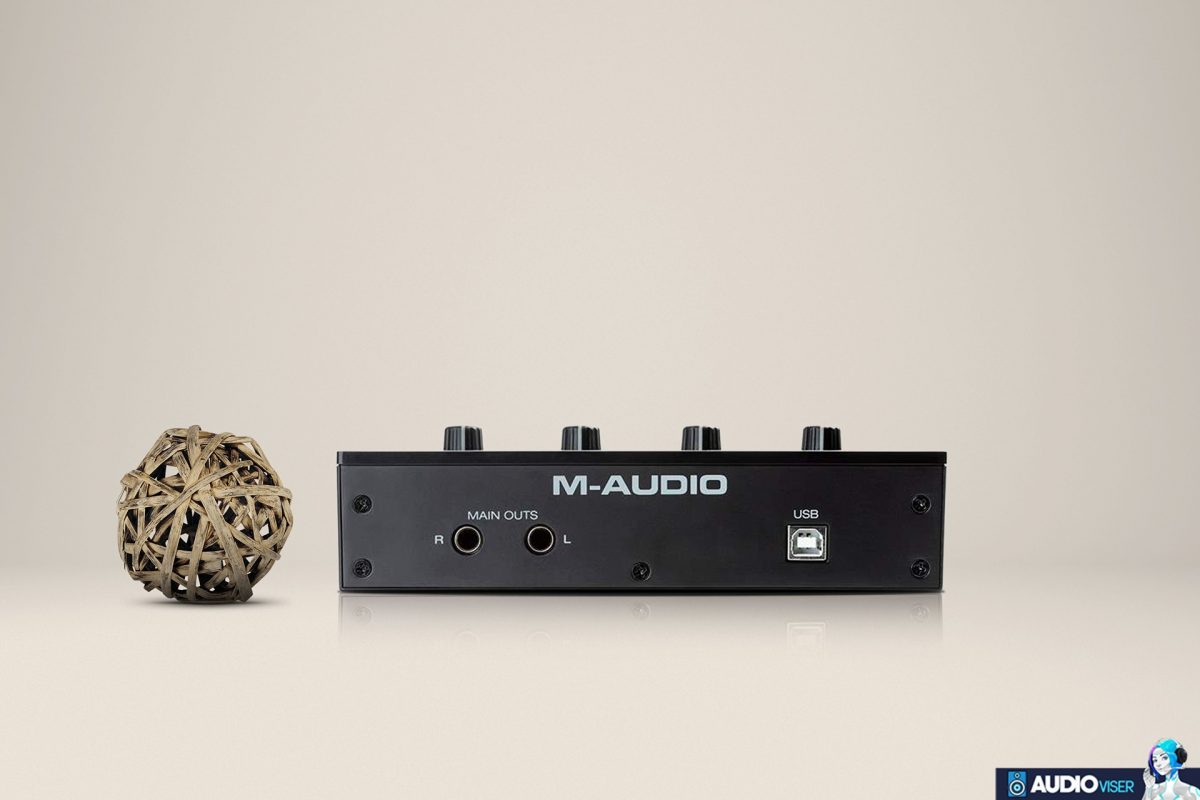
Aside from its absurdly low price, I’m particularly curious to see what this interface brings to the table because I think there are a lot of features that will please customers and raise appreciation. The prospect of introducing you to its features excites me much. I’ll start now.
With this interface, making music is much simpler than it was previously.
The front panel of this budget audio interface has an XLR and TRS combo input, a TRS input, a switch that activates 48V phantom power, and a headphone connector. This budget audio interface is straightforward to use. A switch that allows you to choose between direct monitoring and audio coming from your DAW is also accessible. Three distinct dials can be seen at the top of the interface; two are for gain controls and the third is for master control. An interface cannot exist without its LED, which indicates whether or not you are clipping. There are unbalanced RCA outputs and a USB port on the back of it.
The ASIO drivers, which lessen speed bumps and reduce latency on the path from your audio device to your computer, are the most intriguing feature of this interface, which is unexpected given how inexpensive it is. But this small audio interface offers a lot more than just this; for example, it comes with software that enables you to get started composing music right away and adjust great-sounding beats. There won’t be any issues whether you use iOS or Windows because M Audio M Track is compatible with Mac, iOS, and Windows. The Crystal preamps that are included in this audio interface deserve appreciation as well for their flawless sound quality. We can see that this interface provides us with everything we require.
- A/D resolution: 16-bit/48kHz
- Dynamic Range: 109 dB
Why Should You Buy It?
Don’t hesitate to purchase it if you want a well-equipped interface that will work best with your Shure SM7B but are conscious of your price.
3. Native Instrument Komplete Audio – Best Value

This interface is ideal for solo musicians, and it is one of the most popular audio interfaces with the best value and lowest price. There are numerous reasons why people find it useful, and it remains one of the most popular audio interfaces. Now I will go over the features and sound quality so that many of you will understand why it is always one of the most desired audio interfaces on the market.
Native Instrument Komplete Audio! has a sleek and minimalistic appearance. It is now time to write about its front and back panels and keep you updated. An XLR input and a separate switchable TRS input are available on the front. These inputs are similar to a combo in some audio interfaces, but not in this one. There is no doubt that this interface has a headphone jack. Because the LEDs are placed underneath, the top of this interface is extremely smooth. A USB connector is located on the back panel, and the outputs are unbalanced RCA.
This interface supports direct monitoring, which allows you to hear yourself sing without any latency before the signal reaches the computer. The direct signal is blended with the DAW using the Input/Host mix knob, but it only appears at the headphone output and not in the main outs. This interface’s frequency response is impressively flat, making it suitable for a wide range of musical genres. The most important feature of this interface is the ultra-low noise preamp, which provides a very low noise floor. I’ve said almost everything about this audio interface, and it’s clear that it’s consistently perfect. For the money, this is probably the best audio interface out there.
- A/D resolution: 24-bit/192kHz
- Dynamic Range: 105 dBA
Why Should You Buy It?
If you want your audio interface to have a minimalistic appearance while still having a lot of features, this is the product to get.
2. M Audio AIR – Best Runner Up

I always order my products in my articles so that the best ones are at the top, and this M Audio AIR is no exception. This one always appears to be a great choice for your microphone due to its various features and great sound quality, especially when we are talking about Shure SM7B. There are so many things to say about this product that I won’t waste much time in this section; instead, I’ll just get started.
As I did with the previous product, I will begin with its inputs and outputs here. On the back panel, there is a TRS/XLR combo input, a USB-C port, and two balanced TRS outputs. It has a headphone jack and a direct instrument input on the front. You cannot connect a microphone and a line level to this audio interface at the same time. The large master control knob is located in the center of the interface. You’ll notice gain controls for both the combo and instrument inputs as you explore this audio interface. This interface comes in two models, one is with a single mic input, and another is with two mic inputs.
Furthermore, the LED is in the center, and each channel has its LED. Direct monitoring control allows you to hear what is coming through your DAW, as there is a dial for direct monitoring control.
This audio interface is well-known for the strength of its Crystal preamps performance, so it provides the best possible sound with great nuances. With this product, your recordings will sound true to the original performance, and as a result, you will have the natural sound you desire. As you can see, this is still a versatile audio interface with every feature imaginable, plus it works with any dynamic microphone you want it to.
- A/D resolution: 24-bit/192kHz
- Dynamic Range: 104 dB
Why Should You Buy It?
Since I went over every detail and feature of this product, you should be aware that it provides you with everything you need for your recordings without breaking the bank. It comes in a single mic input and a dual mic input version.
1. Focusrite Scarlett 2i2 – Best Overall

As stated in the title Best Overall, I did not write it in that manner by accident. Numerous factors set this audio interface apart from others and earn it this title. By reading this section, you will understand why I placed this product at the top of my list, and you will see that I did not make any mistakes when we consider what this product provides for such a low price. You’ll be surprised, so I got it. Then it’s time to begin reviewing this product and brighten your day.
Let me begin this section by discussing its back, front panel, and, of course, controls. There is a combo XLR/TRS input, level switch, and air switch for each input, a 48-volt phantom power switch, monitor level knob, and monitoring control for the headphones on the front panel. The USB-C port is located on the back panel, along with the TRS outputs. As a result, you can easily connect your setup or laptop via USB cable, as well as your microphone via XLR cable. Setting levels is also very simple. When the signal level is ideal, the LED circles that surround the gain knobs glow green, and when it clips, they glow red.
Its twin preamp design allows you to connect two microphones to this single interface for a simple podcast setup. Because of the Air Mode, this device can work with any microphone sound source. This interface’s higher frequency response adds some brighter characteristics to vocals. This audio interface captures every detail, resulting in a perfect and natural-sounding recording. Its DAC and ADC deliver high-quality results with no flaws. In terms of preamps, this product has adequate preamps. To summarize, it is clear that this product maintains excellent sound quality and incredibly nice features. Definitely one of the best audio interfaces for Shure SM7B and any other dynamic microphone.
- A/D resolution: 24-bit/192kHZ
- Dynamic Range: 111 dBA
Why Should You Buy It?
When you consider all of the features that this product provides, the high sound quality and, most importantly, the low price. You can’t avoid purchasing it.
Buying guide
Since I’m sure everyone is wondering “Which audio interface should I buy?,” I created this buyer’s guide to advise you of all the important factors to take into account before making your choice.
Outputs
The headphone outputs are the section’s most crucial component. Different output configurations are also possible; a stereo output is crucial. Additionally, having several headphone outputs will enable the output of various headphone mixes.
Inputs
The inputs are an important component of audio interfaces; they typically have two inputs that can handle both line-level and microphone signals. XLR inputs, USB inputs, MIDI inputs, and other options are available on audio interfaces. You can use several microphones simultaneously if the inputs include preamps.
There are some interfaces that have more than one mic input, so if you are planning to use more than one mic, definitely get an interface with more than one mic input.
Preamps
Each microphone and instrument input has a preamplifier, which is used to boost low-level microphone signals. Only two preamps or eight microphone inputs with preamps can be used in an interface. If your interface has preamps, the audio quality of your recordings could be outstanding.
Price
As is common knowledge, the cost of this technological equipment can be somewhat high. However, I’m positive we all want to find something less expensive. As a result, there are several audio interfaces available that will provide the desired sound effect while yet being reasonably priced.
Final Words
Even though this isn’t my first article, every time I complete one, I become emotional since I adore communicating with you guys, even if it is only informally. This time, I made a promise at the beginning of my article that I wouldn’t talk too much and would keep it brief so you wouldn’t grow tired of reading it. I believe I succeeded in providing you with all the information required for you to choose the best audio interfaces for Shure SM7B microphone.
I sincerely hope you enjoy this article and continue to read my upcoming writings. Bye-bye.
Further Reading
I thinks that everyone wants an excellent pair of Sony headphones so let’s read about Sony MDR V6 vs Sony MDR 7506, so you can make the right decision.
Maye there is someone who don’t know how to connect JBL speakers to iPhone . No worries, this is why we are here.
Take a look at this KEF Q950 review and see what it offers.
If you mind your budget here are some subwoofers for under $500.
Equipment Tester & Reviewer
I’m an unbiased audio equipment tester & reviewer, dedicated to keeping you up-to-date on the latest and greatest in audio gear.

